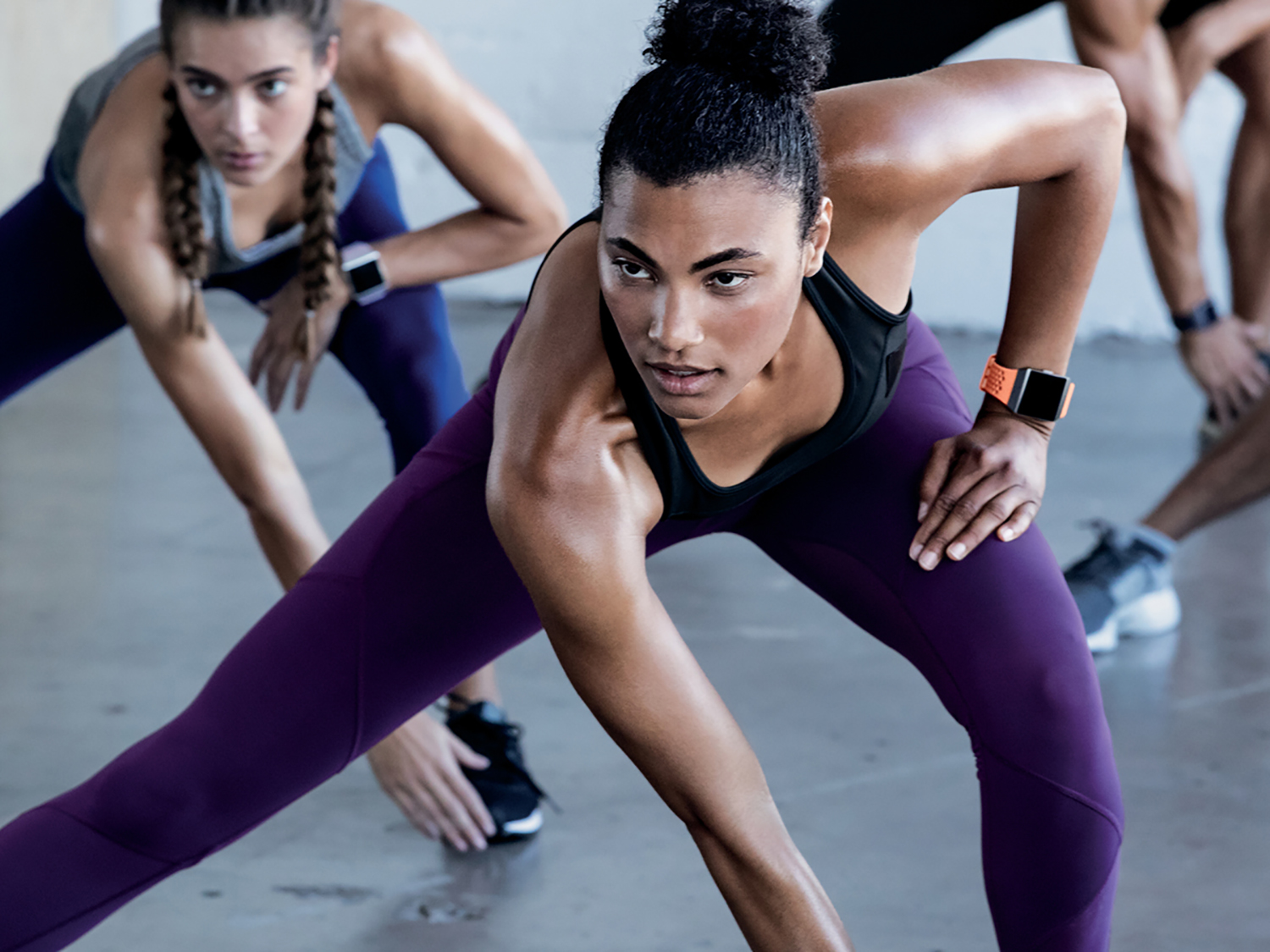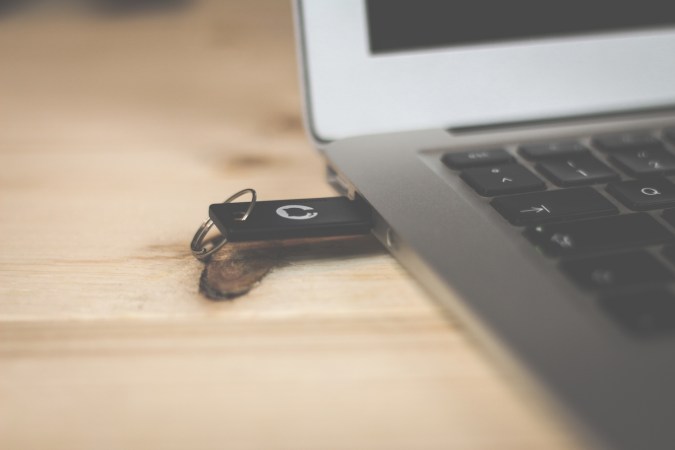

We may earn revenue from the products available on this page and participate in affiliate programs. Learn more ›

If you’ve got a fitness tracker or smartwatch strapped to your wrist, there’s a good chance it’s made by Fitbit, the company that was responsible for 15 percent of all the wearables shipped worldwide last year.
Part of the appeal of a Fitbit device is how simple it is: just strap it on your wrist, download a companion app (available for Android and iOS) and get going. But if you take the time to dig into the different options and settings, you can make your Fitbit smarter than it already is.
Wear it right… or left
Fitbit’s algorithms for counting steps and tracking activities work more accurately if you tell the device whether you’re wearing it on your dominant hand’s wrist—the one you write with—or not.
You should have sorted this out when you first set up your Fitbit, but if you want to double-check or switch the wrist you have your tracker on, head to Wrist Placement on your tracker settings tracker inside the Fitbit app.
Stay connected
If you’re an Android user, you’ll find an Always Connected toggle switch down at the bottom of the settings page of the Fitbit app. Turn it on and you’ll improve the reliability of the syncing and notification processes, delivering a smoother experience all around.
The downside of keeping this on is that the batteries in both your phone and the tracker will drain more quickly, though it really depends which devices you’re using as to how fast the drain will be. If you can live with the impact on battery life, keep this option turned on.
Get some peace
If you’ve got a Fitbit device that supports phone notifications, know you’re in full control over which phone apps trigger notifications on it and which don’t. Avoid having your wrist buzzing all the time by turning some of them off.
To do this inside the Fitbit app, tap your profile picture (top left on the front screen) then choose Notifications. As well as picking which phone apps can send alerts, you can also control other Fitbit notifications, like low battery warnings or step goals.
Explore your limits

Many Fitbits come with heart rate monitoring, and while it all works fine out of the box, you can configure what are known as “heart rate zones” for more helpful analysis. These zones essentially tell the Fitbit app when you’re really pushing your body, or when you’re just lightly exercising.
To customize your heart rate zones beyond the defaults, tap your profile picture (top left on the front screen of the Fitbit app), then pick Heart Rate Zones. Beyond that, you can find more information here on how these zones can help your training.
Improve sleep tracking
As with heart rate monitoring, it’s possible to adjust the default metrics Fitbit uses to judge your sleep quality and get a more accurate analysis of your slumber time as a result. If Fitbit is saying you slept well, but you’re tired the next day, you can adjust the sleep sensitivity setting of your tracker.
The best place to do this is via your online Fitbit dashboard. Click the cog icon (top right, once you’ve logged in), then choose Settings, select your device, and click Sleep tracking.
Make every step count

If you know how long your stride is, your step count will more accurately reflect the walking and running you’ve actually done. Fitbit can gauge this automatically, but you can also enter it into the app yourself.
From inside the Fitbit app, tap your profile picture (top left on the front screen), then choose Advanced Settings and Stride Length, which will let you enter the length manually (Fitbit suggests averaging the length of at least 20 strides to get an accurate value).
Take on a challenge
At times, we all need a little extra motivation to reach our fitness goals, and Fitbit Challenges can help—they add some fun to your next run or walk by imagining you’re journeying around famous places or landmarks such as Vernal Fall or the Pohono Trail. You’ll get to see the distance you’ve covered in relation to your chosen path, plus photos of the more-famous route as you go ’round your own.
From inside the Fitbit app, tap Discover then Challenges & Adventure. You can opt to take on friends and family with these challenges too, to see who gets to the finish line first.
Don’t miss anything
The Fitbit app allows you to manually log exercise and sleep, just in case you forgot to wear your tracker while you were snoozing, or if your Fitbit’s battery died just before that 5K run you did last weekend. The resulting stats aren’t as accurate as when they’ve been measured in real time, but it’s a useful way to fill in the gaps in your Fitbit history.
From the front screen of the Fitbit app, tap the “plus” symbols to the right of your most recent sleep or exercise records, just below the main dashboard. In the case of exercise, you need to switch to the Log previous tab before you can enter details.
Get reminders to move
If you want to avoid sitting for too long but can never remember how long you’ve been at your desk until it’s too late, your Fitbit includes a feature that reminds you it’s time to move.
You’ll get a buzz on your wrist and an alert on the screen (if your Fitbit has one), to let you know you have 10 minutes to complete the minimum threshold of 250 steps in an hour. If you work sitting all day, this feature is a great way to know when to stretch your legs, and it will help you avoid falling into a sedentary routine.
From the front page of the Fitbit app, tap your profile picture (top left), choose your device, then tap Reminders to Move.
Find the app for you

Did you know the Fitbit app plays nicely with a ton of other apps? MapMyRun, RunKeeper, Endomondo, and Strava, for example, all work with Fitbit. You can use these apps to track your runs and then pipe the information back to your Fitbit account.
Connecting these apps only takes a few minutes, but the easiest to set up with your FitBit is probably Strava: just visit this page, log into your two accounts, and all your Strava activities will be logged in Fitbit too.
Export your data
The Fitbit app is less keen on letting you export data out of the app, though you can do it with the help of IFTTT (If This Then That). Create a free account and then a new applet with Fitbit as the trigger. You can then select what to do with your sleep or step stats—you can log new data in a Google Sheets spreadsheet, a text file in Dropbox, or as a note in OneNote, for example.
Get extra help with your fitness
If you want even more from your Fitbit, the platform just launched a new Fitbit Premium subscription that promises to help you go that extra mile. For $10 a month (or $80 year), the service will give you a deeper dive into your fitness statistics and records, showing you more personalized insights, coaching programs tailored for you, more detailed analysis of your sleep patterns, and more.
Fitbit Premium also comes with a library of thousands of audio and video workouts you can use for some extra motivation and guidance. When you buy a new Fitbit device, you can sign up for a free seven-day trial of the service.















